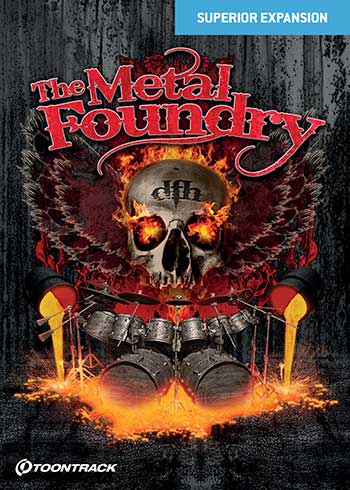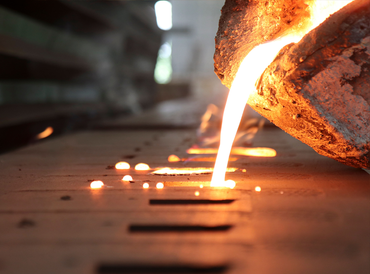Understanding Metal Casting Processes: Advancements and Trends in the Foundry Sector
The foundry sector is experiencing significant improvements driven by technical improvements. Technologies such as 3D printing and man-made knowledge are improving steel casting processes, enhancing efficiency and precision. Lasting methods are acquiring grip, emphasizing the relevance of ecological obligation. Additionally, the introduction of sophisticated materials and automation is enhancing general casting quality. These growths suggest a pivotal change in the industry, elevating questions regarding future directions and ramifications for suppliers.
Advancements in 3D Printing for Metal Casting
Recent developments in 3D printing modern technology have substantially changed the landscape of metal casting. The integration of additive production methods has actually made it possible for the rapid manufacturing of complicated patterns and mold and mildews that were previously hard or difficult to accomplish with typical methods. By making use of materials such as sand and metal powders, producers can create elaborate geometries that boost design adaptability and decrease product waste. This development not just quickens the prototyping procedure but also permits for the personalization of components tailored to details applications.
Furthermore, 3D printing helps with much shorter preparation, which is necessary in industries requiring quick turn-around for parts. The technology likewise supports the production of lightweight structures, consequently boosting power effectiveness in final product. As an outcome, the foundry industry is witnessing a change towards more sustainable techniques, driven by the performance and precision offered by these contemporary 3D printing methods in steel casting processes.
The Role of Expert System in Precision Manufacturing
As industries progressively embrace advanced manufacturing technologies, expert system (AI) is playing a critical role in enhancing precision production procedures. AI algorithms examine huge datasets to maximize and recognize patterns manufacturing criteria, causing improved precision and performance. In steel casting, AI help in predictive maintenance, lowering downtime by forecasting tools failures before they take place.
AI-driven simulations enable producers to design the casting procedure, refining designs and reducing flaws. Artificial intelligence methods boost top quality control by detecting abnormalities in real-time, thereby guaranteeing that just products meeting strict requirements continue through the assembly line.

Sustainable Practices in the Foundry Market
Sustainability has actually emerged as a vital focus in the foundry industry, prompting suppliers to take on methods that decrease ecological impact while preserving efficiency - Metal Foundry. One prominent technique includes the recycling of products, particularly steels, which substantially minimizes waste and power consumption. Foundries are significantly implementing closed-loop systems, permitting the reuse of sand and various other casting materials, therefore reducing the requirement for virgin resources
Additionally, energy-efficient technologies, such as electrical furnaces, are getting traction, as they reduced greenhouse gas exhausts contrasted to conventional approaches. Several foundries are discovering the use of environmentally friendly layers and naturally degradable binders to lower poisonous by-products. Employee training on sustainable methods has actually also ended up being essential, cultivating a culture of ecological obligation within companies. Overall, these sustainable practices not only contribute to environmental preservation but additionally enhance the lasting viability of the foundry industry in a progressively eco-conscious market.
Technologies in Materials for Enhanced Casting Quality
With the constant development of the foundry market, developments in materials have come to be necessary for improving casting high quality. Advanced alloys and composite materials are increasingly being made use of to improve mechanical residential properties and minimize problems in spreadings. These products often use superior strength-to-weight ratios and enhanced resistance to rust and wear, dealing with the demands of modern-day applications.
In addition, the consolidation of nanomaterials is gaining grip, permitting for finer microstructures that lead to improved surface area coatings and dimensional precision. Aluminum Foundry. 3D printing technologies likewise play a role in generating complex geometries with marginal waste, allowing making use of customized products that were previously testing to cast
In addition, the development of eco-friendly binders and ingredients contributes to lasting techniques while maintaining top quality end results. Collectively, these advancements not only enhance the efficiency of cast items but also straighten with the market's shift towards sustainability and efficiency.
Automation and Robotics in Metal Casting Procedures
Automation and robotics are revolutionizing metal casting processes by simplifying procedures and improving precision. In modern shops, robotic systems are employed for jobs such as mold handling, pouring, and finishing, greatly reducing human intervention. This not just reduces the danger of mishaps however additionally guarantees regular top quality in manufacturing.
Automation innovations, such as computer numerical control (CNC) machines, promote elaborate layouts and complex geometries that were previously challenging to achieve. In addition, real-time data analytics make it possible for makers to maximize and monitor procedures performance continuously.
The integration of automation causes increased efficiency and efficiency, enabling foundries to satisfy growing market demands while lowering lead times. As the industry accepts these developments, the labor force is likewise progressing, needing brand-new skills to run and preserve advanced machinery. Overall, the fostering of automation and robotics is a critical trend forming the future of metal casting procedures.
Frequently Asked Concerns
What Is the Background of Metal Casting Methods?
Metal casting techniques go back to old people, with evidence of bronze casting in Mesopotamia around 3000 BCE. Over centuries, approaches evolved considerably, incorporating improvements in products and technology, shaping contemporary industrial methods.
Exactly How Does Metal Casting Effect the Setting?
Metal casting substantially influences the setting via energy consumption, exhausts, and waste generation. Developments in sustainable practices and innovations aim to alleviate these results, promoting more environmentally friendly approaches within the sector.
What Safety Actions Are Crucial in Foundries?

What Prevail Defects in Metal Casting Products?
Typical defects in metal casting items include porosity, contraction, misruns, cool shuts, and surface blemishes. These problems arise from variables such as incorrect temperature control, insufficient mold and mildew layout, and contamination during the casting process.
Just How Do Foundries Ensure Quality Control in Casting Processes?
Factories execute extensive quality assurance procedures through normal evaluations, standard screening, procedure surveillance, and adherence to sector criteria. These practices help determine problems early, making certain the integrity and reliability of the final casting click here items.
Developments such as 3D printing and synthetic intelligence are reshaping steel casting procedures, improving efficiency and precision. Current improvements in 3D printing innovation have significantly transformed the landscape of metal casting. Automation and robotics are transforming metal casting processes by enhancing and improving operations precision. Metal casting techniques day back to ancient human beings, with proof of bronze casting in Mesopotamia around 3000 BCE. Typical problems in metal casting products consist of porosity, shrinking, misruns, chilly shuts, and surface area imperfections.